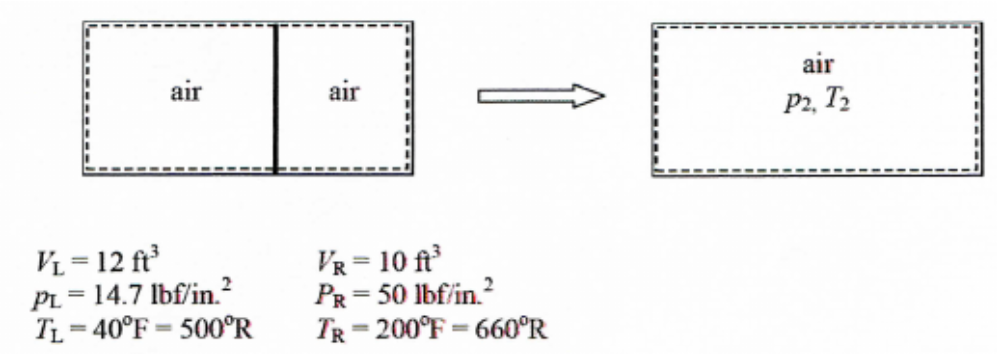A rigid, well-insulated tank contains air. A partition in the tank separates 12 ft^3 of air at 14.7 lbf/in2, 40◦F (left side of the tank) from 10 ft^3 of air at 50 lbf/in2, 200◦F(right side of the tank), as illustrated in the figure. The partition is removed and air from the two sides mix until a final equilibrium state is attained. The air can be modeled as an ideal gas, and kinetic and potential energy effects can be neglected. (Note: values for the left side of the tank are denoted with a subscript L, and values for the right side of the tank are denoted with a subscript R). a) Determine the final temperature (in F) b) Determine the final pressure (in lbf/in^2) c) Calculate the amount of entropy produced, in Btu/R d) Is this mixing process reversible or irreversible?
A rigid, well-insulated tank contains air. A partition in the tank separates 12 ft^3 of air at 14.7 lbf/in2, 40◦F (left side of the tank) from 10 ft^3 of air at 50 lbf/in2, 200◦F(right side of the tank), as illustrated in the figure. The partition is removed and air from the two sides mix until a final equilibrium state is attained. The air can be modeled as an ideal gas, and kinetic and potential energy effects can be neglected. (Note: values for the left side of the tank are denoted with a subscript L, and values for the right side of the tank are denoted with a subscript R).
a) Determine the final temperature (in F)
b) Determine the final pressure (in lbf/in^2)
c) Calculate the amount of entropy produced, in Btu/R
d) Is this mixing process reversible or irreversible?

Trending now
This is a popular solution!
Step by step
Solved in 2 steps









